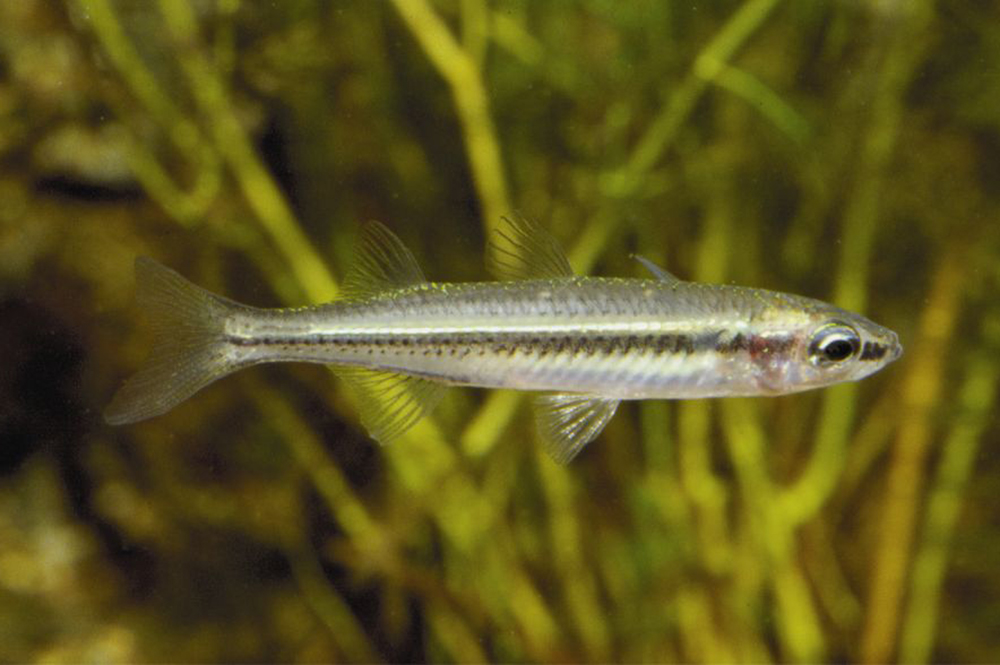Unspecked Hardyhead, Craterocephalus fulvus Ivantsoff, Crowley & Allen 1987

Unspecked Hardyhead, Craterocephalus fulvus. Source: Gunther Schmida / http://www.guntherschmida.com.au. License: CC BY Attribution-Noncommercial-ShareAlike
Unspecked Hardyhead, Craterocephalus fulvus Ivantsoff, Crowley & Allen 1987
More Info
|
Distribution |
Known from Maryborough, Queensland to northern New South Wales and throughout the Murray Darling System of NSW, QLD, Victoria and South Australia. Temperate, shoaling, inhabiting the margins of slow-flowing or still freshwater rivers and lakes, backwaters and billabongs with sand, gravel or mud substrates and aquatic vegetation. |
|
Features |
Meristic features: Dorsal fin D1 IV-VII; D2 I, 5-10; Anal fin I, 7-10; Pectoral fin 12-16; Vertebrae 31-36; Gill rakers on lower branch of 1st arch 9-13. Body laterally compressed, slender, relatively elongate; mouth small, protrusible, with gape restricted by fusion of lips; rear edge of jaw does not reach back to eye; teeth in several rows in both jaws minute; gill rakers in first lower gill arch short and tubercular, less than half diameter of pupil; large speci¬mens often with shallow interorbital trough and with head sloping obliquely towards snout; lateral line absent. Body scales large, dorsoventrally oval, with circuli complete and concentric; vertical scale count 32-35; horizontal scale count 7-7.5; preopercle and opercle with scales; head scales large and irregularly shaped. No produced fin-spines; two separate dorsal fins; origin of first dorsal just behind origin of ventral fin; origin of second dorsal fin above origin of anal fin; caudal fin moderately forked. |
|
Size |
To 7.8 cm SL, commonly 5-6 cm SL. |
|
Colour |
Colour varies with location; dorsal surface yellow or tawny-grey, lower sides and ventral surface silvery; dusky stripe from snout through the eye and operculum, extending to the base of the caudal fin, stripe may be black, gold or silvery along body. Males are bright golden yellow during the spawning season. |
|
Feeding |
Carnivore - feeds on small insects and their larvae, and microcrustaceans. |
|
Biology |
Spawning occurs from October to February with peak spawning activity in spring. Fecundity is low with 20-107 eggs laid. Eggs are relatively large, approximately 1.3-1.5 mm diameter; transparent and demersal with filamentous adhesive strands. Larvae hatch at 3-5 mm TL after 4-7 days incubation. |
|
Remarks |
This species is now rare in the southern parts of its range but remains common in the north. |
|
Similar Species |
Differs from C. stercusmuscarum in lacking a spotted pattern and in having a slightly higher vertebral count (35-38 versus 31-36). C. fulvus is also similar to C. lentiginosus. |
|
Etymology |
The specific name fulvus refers to yellow or tawny hue of this species. |
|
Species Citation |
Craterocephalus stercusmuscarum fulvus Ivantsoff, Crowley & Allen, 1987, Rec. West. Aust. Mus. 13(2): 172, fig. 1. Type locality: Wirrabilla Lagoon, Collarenebri, NSW. |
|
Author |
Vanessa J. Thompson & Dianne J. Bray |
Unspecked Hardyhead, Craterocephalus fulvus Ivantsoff, Crowley & Allen 1987
References
Ivantsoff, W., Crowley, L.E.L.M. & Allen, G.R. (1987). Descriptions of three new species and one subspecies of freshwater hardyhead (Pisces: Atherinidae: Craterocephalus) from Australia. Rec. West. Aust. Mus. 13(2): 171–188.
Lintermans M. (2007) Fishes of the Murray-Darling Basin: An introductory guide. Murray-Darling Basin Commission, Canberra. 157 pp.
Pusey B., Kennard M. & Arthington A. (2004) Freshwater fishes of north-eastern Australia. CSIRO publishing, Collingwood, Victoria 684 pp (as Craterocephalus stercusmuscarum fulvus)


